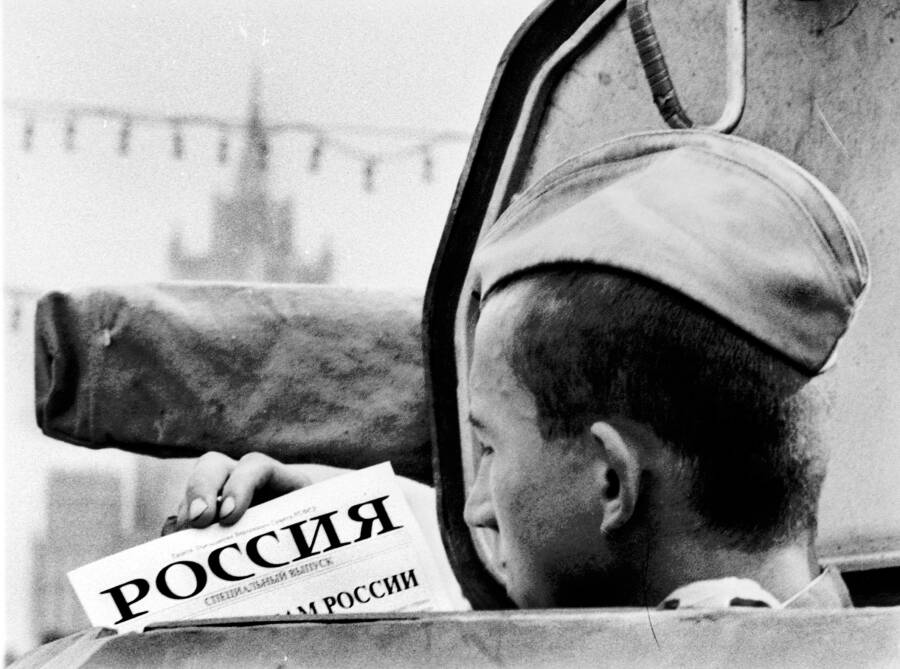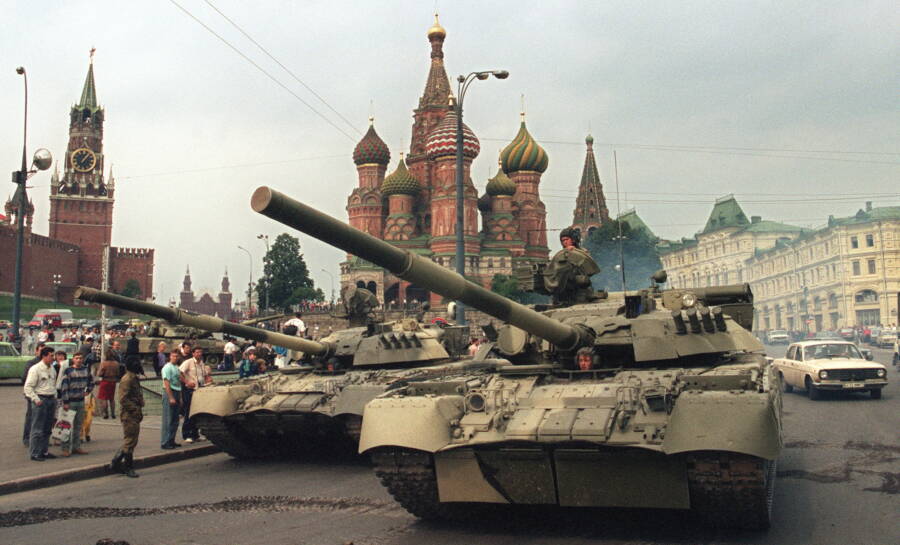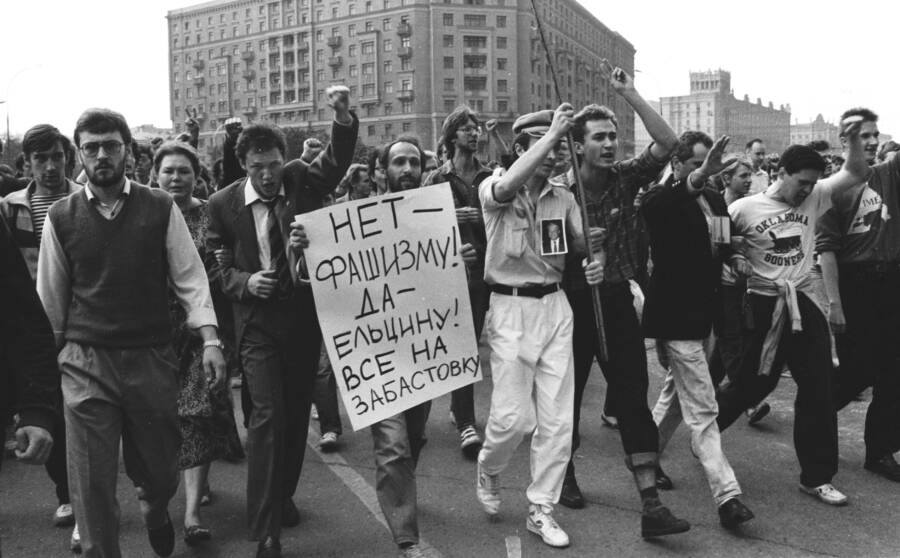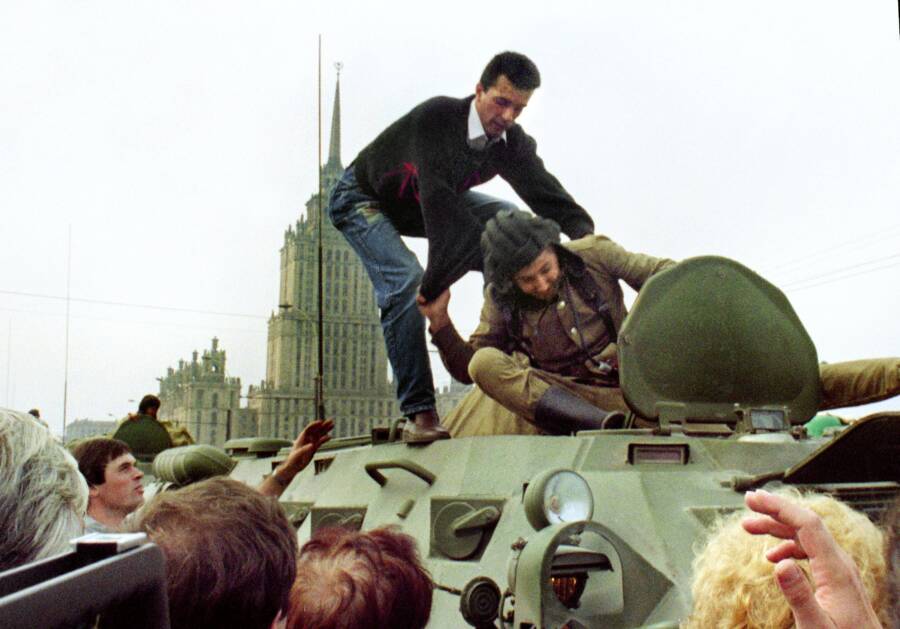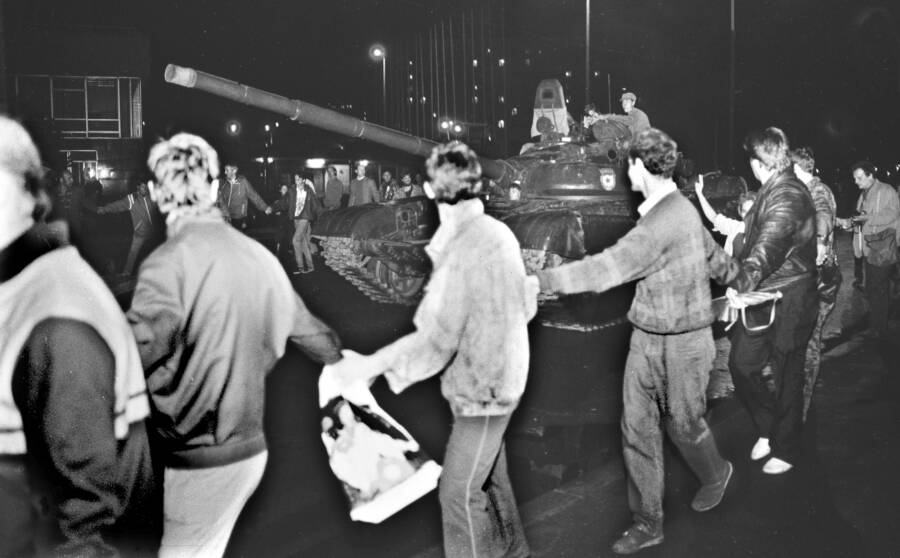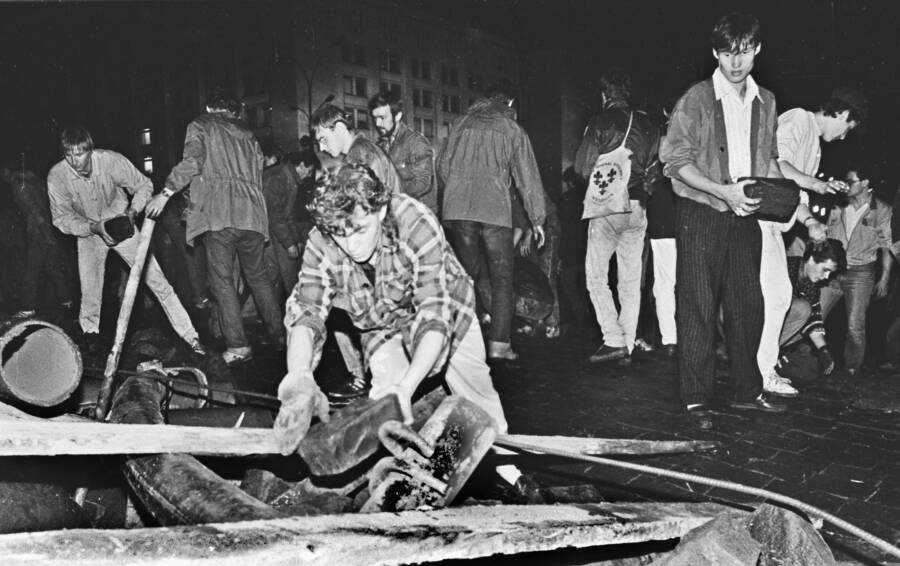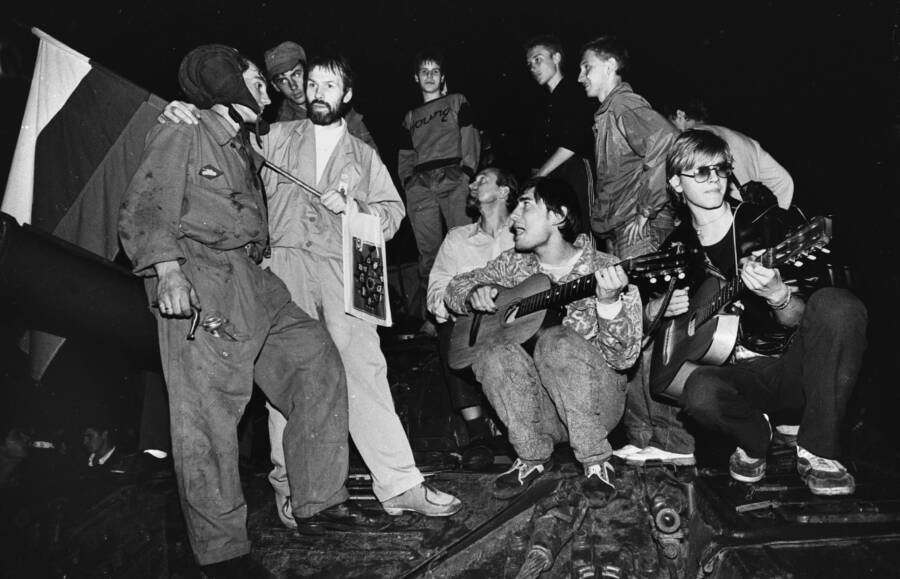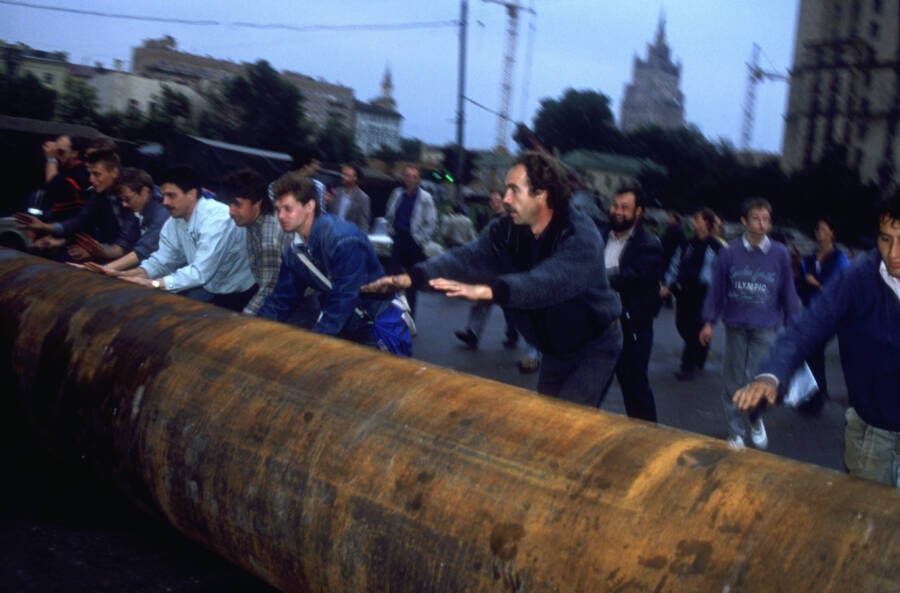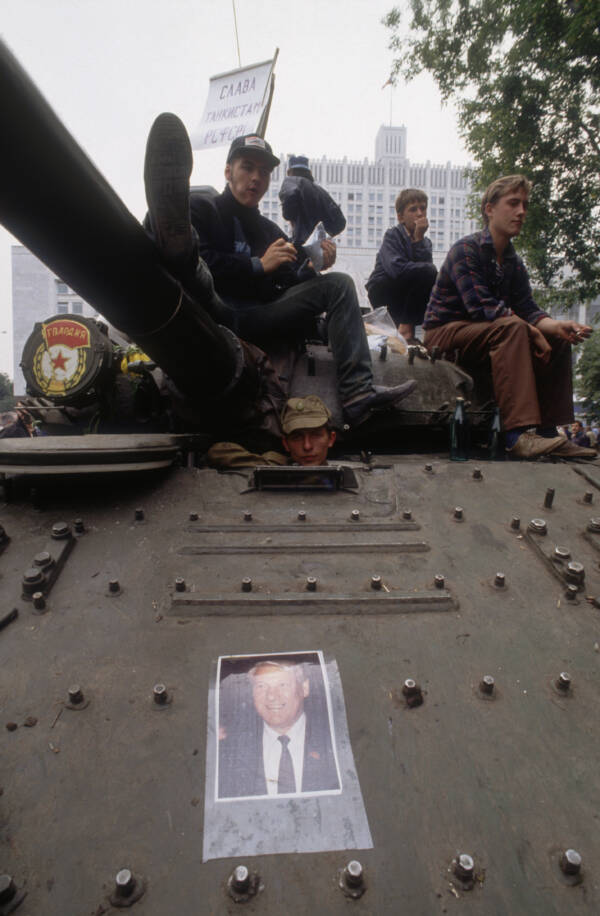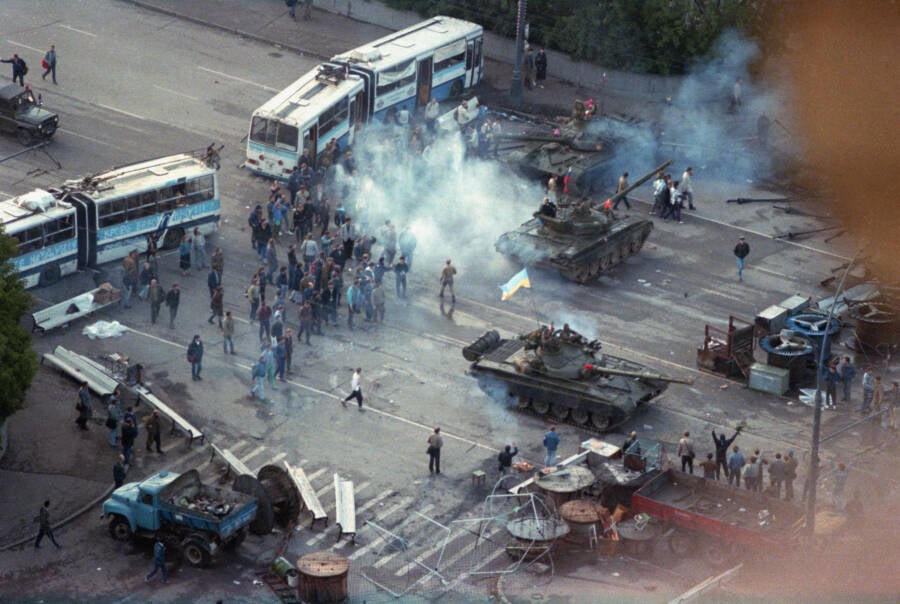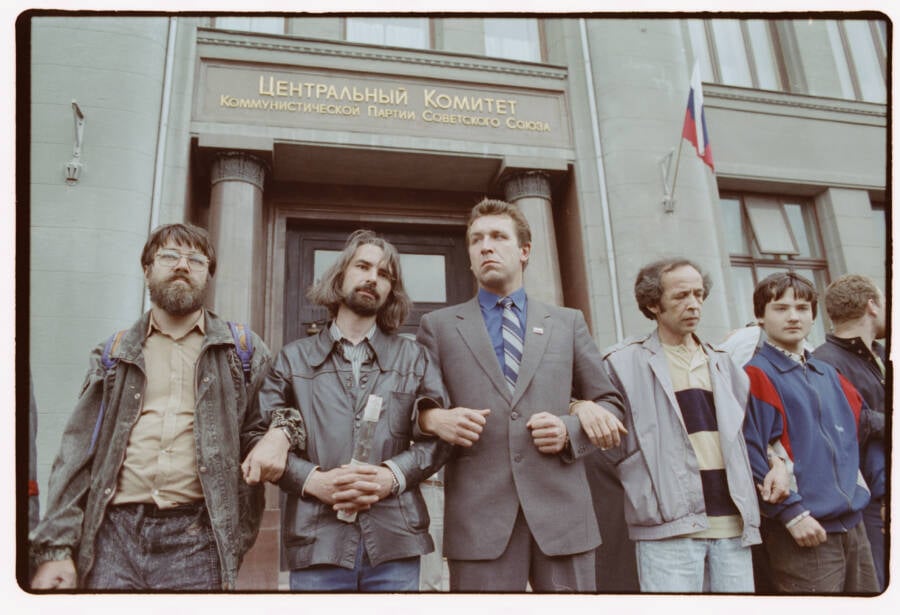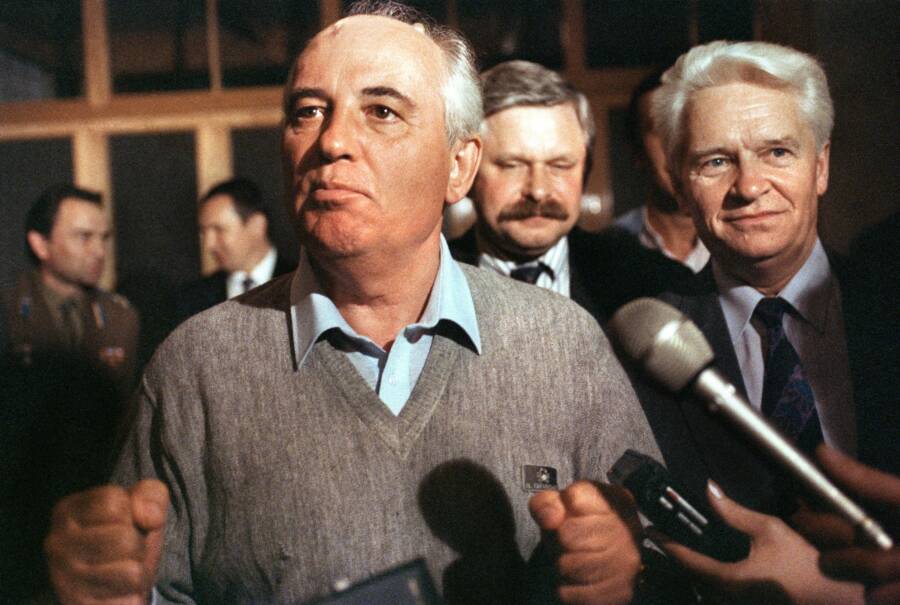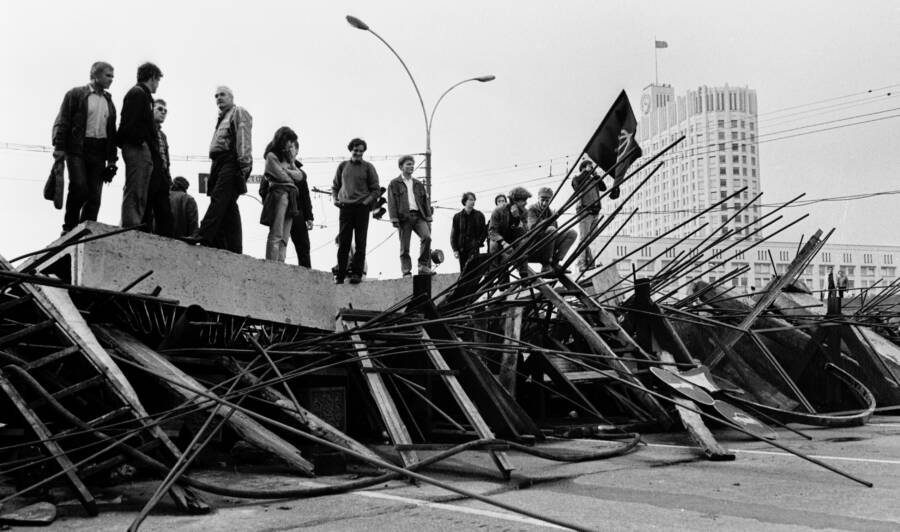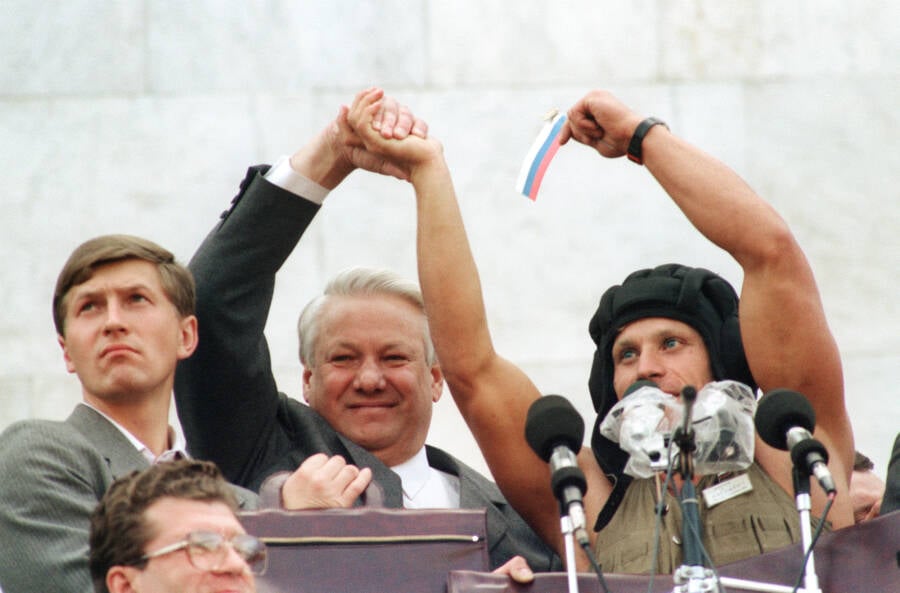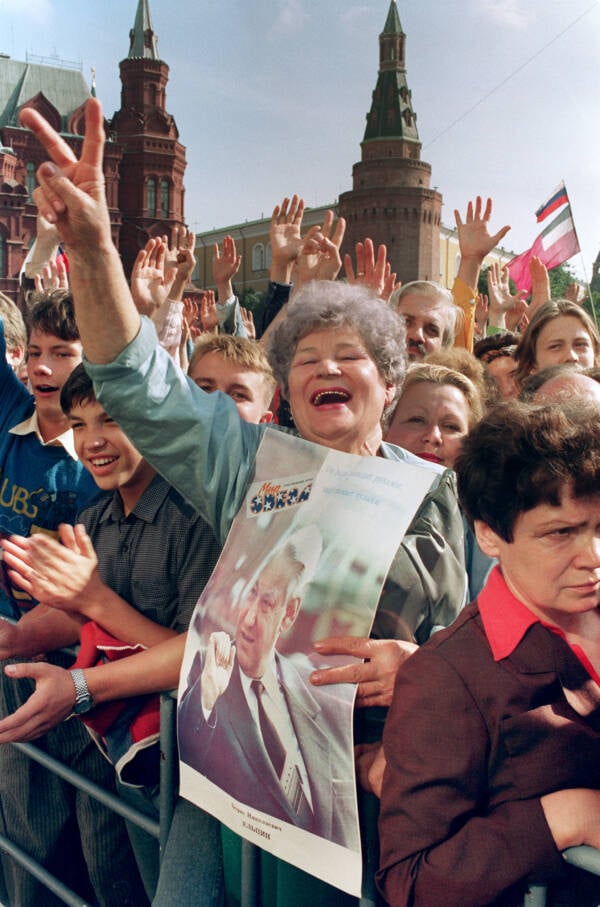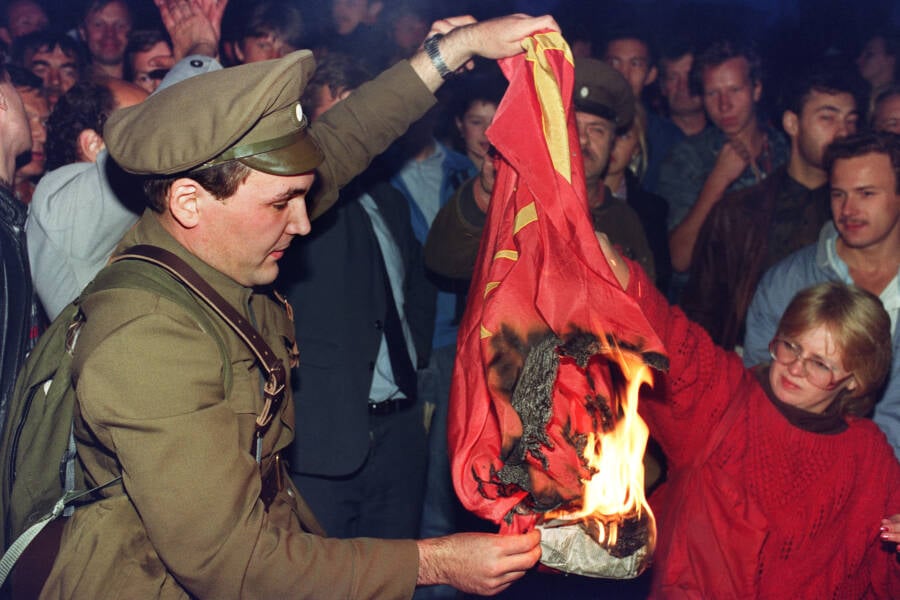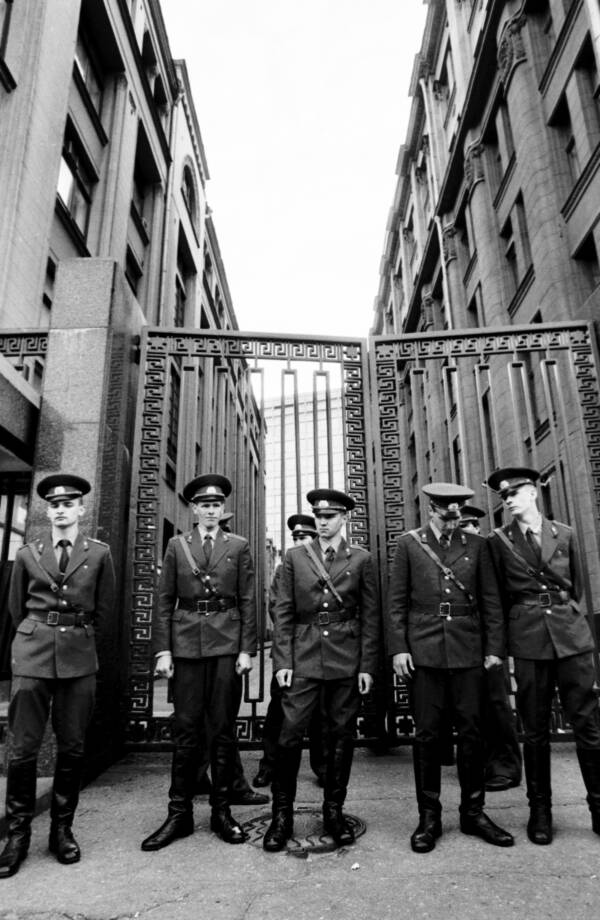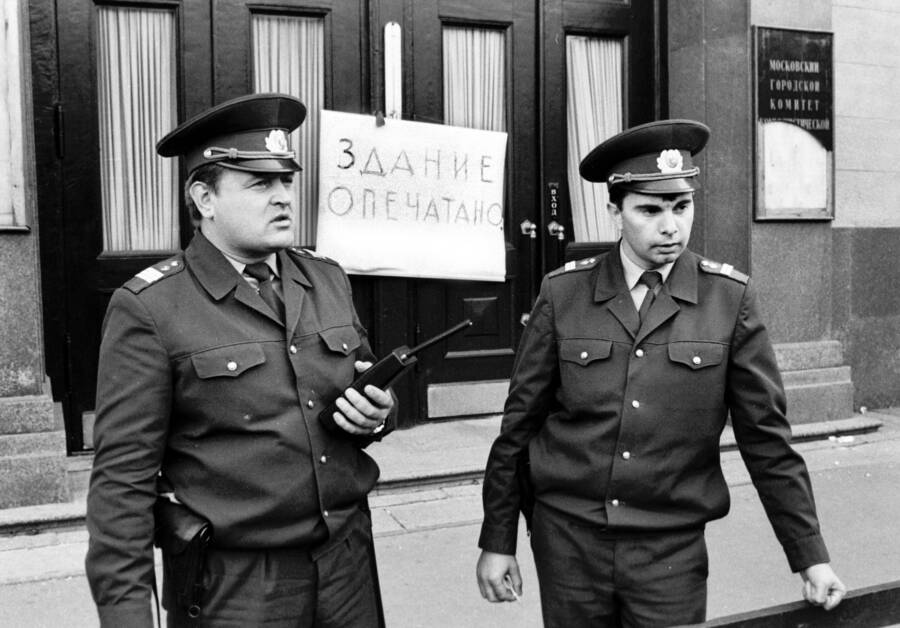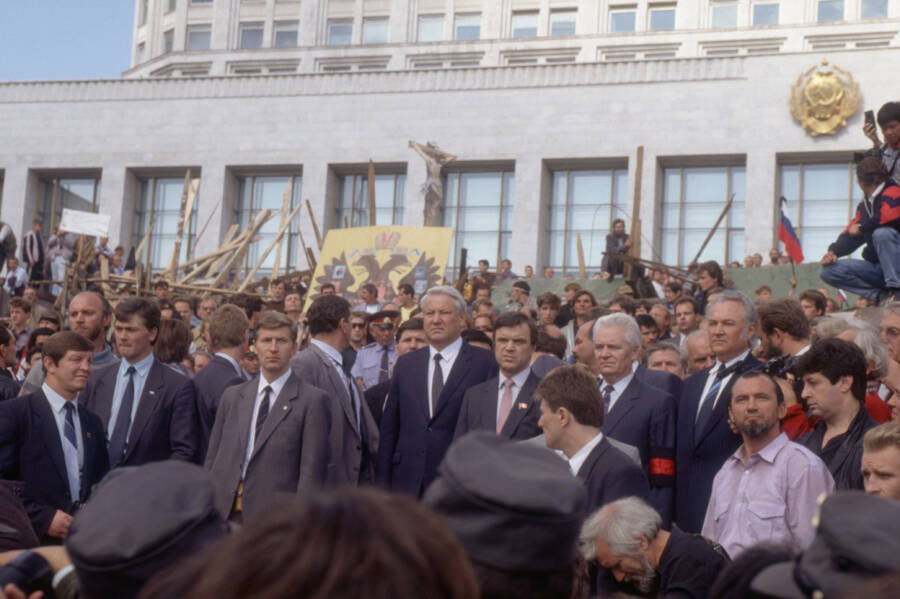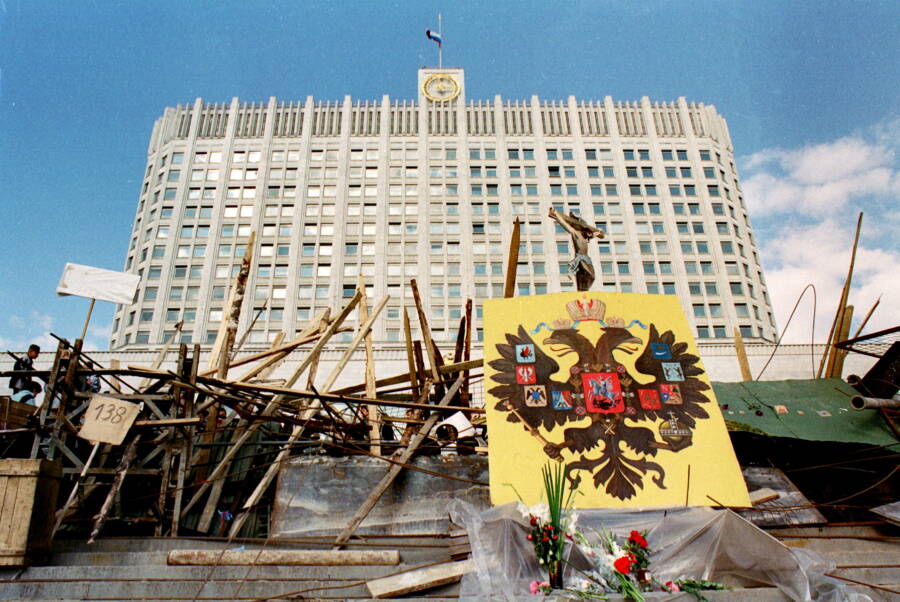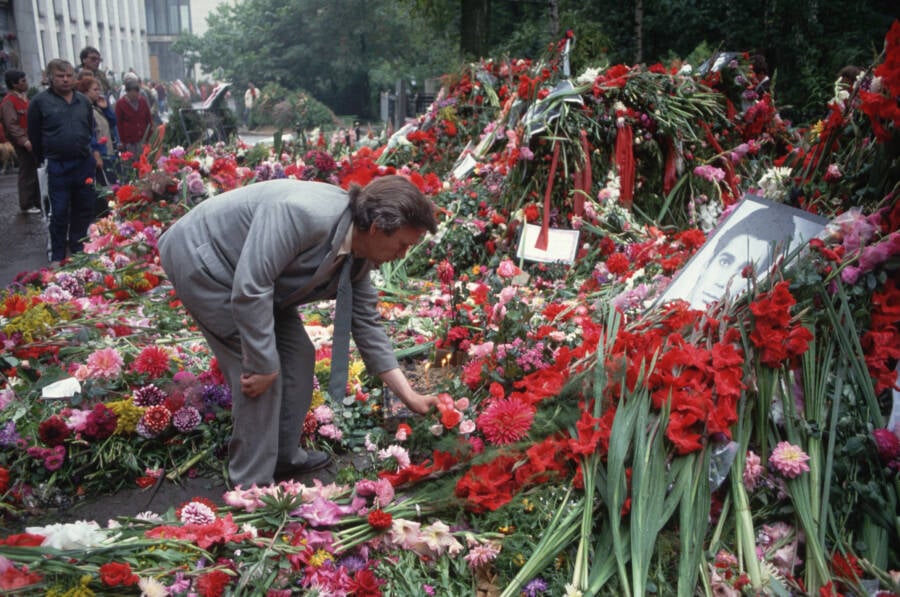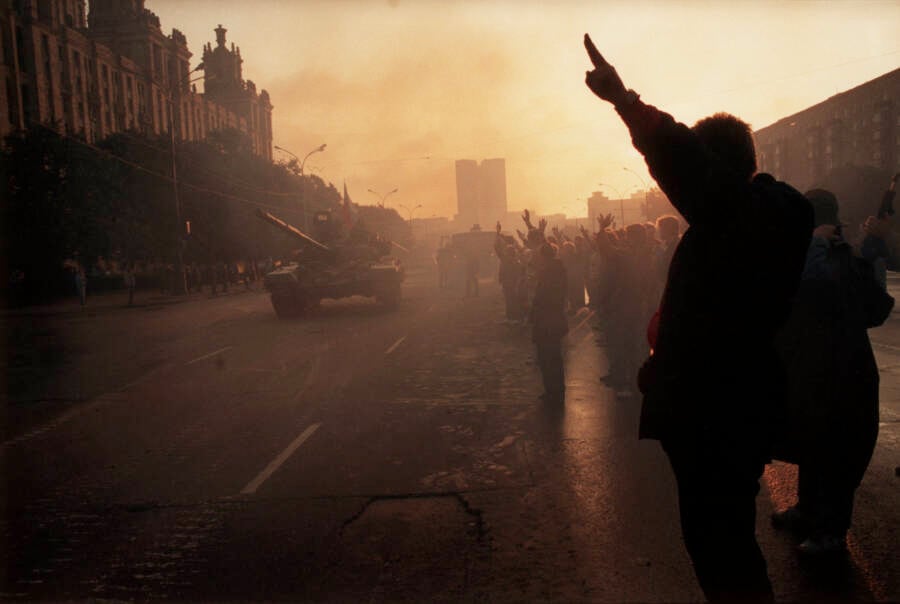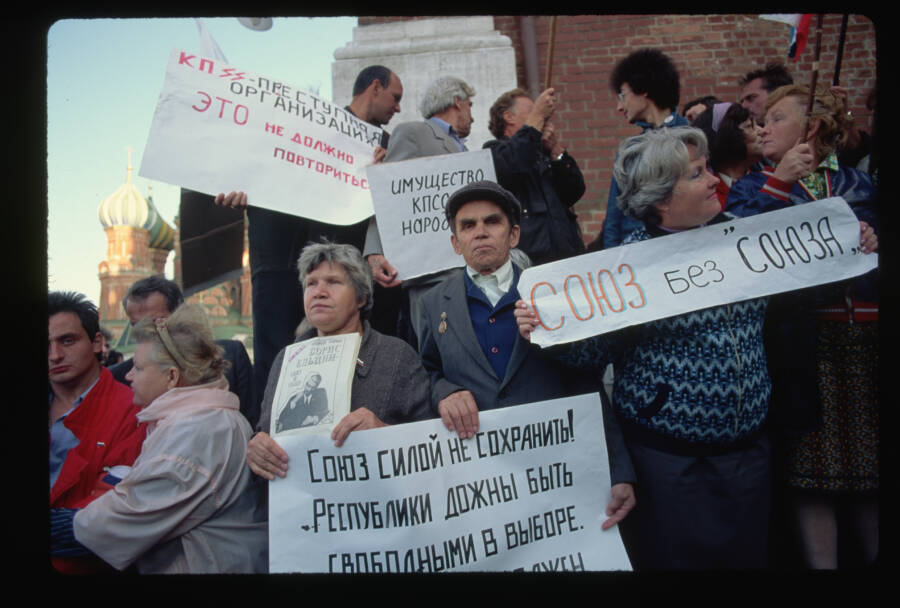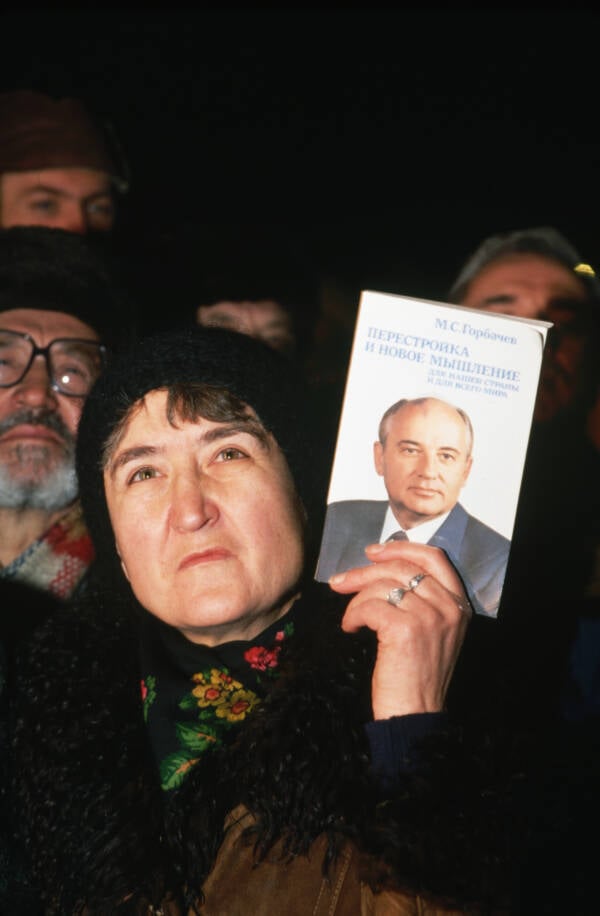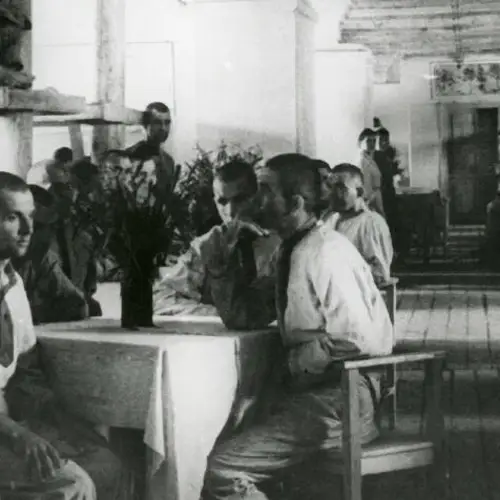The collapse of the U.S.S.R. came in December 1991 after controversial policies introduced by Mikhail Gorbachev and growing internal conflict brought an end to the 74-year rule of the global superpower.
By 1991, many in the Soviet Union felt that change was in the air. The last several years had seen the end of the war in Afghanistan, the fall of the Berlin Wall, and a series of revolutions across the bloc. But ultimately, the collapse of the Soviet Union would come from within Russia itself.
That August, a number of high-ranking Communist officials attempted to steady the ship by deposing the Soviet leader, Mikhail Gorbachev, who had introduced several controversial reforms to Soviet society. Their attempted coup was thwarted when Gorbachev refused to step aside. Angry Russians flooded Moscow in protest, and Gorbachev clung to power.
But the failed coup highlighted deep tensions in the U.S.S.R., elevated the profile of a politician named Boris Yeltsin, and put into motion the events that would lead to the fall of the Soviet Union that December.
Above, look through 55 photos of the collapse of the Soviet Union, and below, discover the dominoes that led to its eventual fall.
The Rise And Fall Of The U.S.S.R.
The Soviet Union was born during another period of change: the Russian Revolution of 1917. Shortly after the Bolsheviks overthrew the czar and seized power, Russia and several other countries formed a union. In December 1922, they established the Union of Soviet Socialist Republics (U.S.S.R.).
At first, the U.S.S.R. was led by the architect of the Russian Revolution, Vladimir Lenin. But when Lenin died in 1924, the General Secretary of the Communist Party, Joseph Stalin, seized power.

Daily Herald Archive/National Science & Media Museum/SSPL via Getty ImagesJoseph Stalin speaking in 1937, roughly a decade after he took power.
Under Stalin's iron rule, Soviet society changed dramatically. Stalin instituted strict five-year plans, sentenced dissidents to Soviet gulags, and instituted a Great Purge to wipe out his enemies. At least nine million people died under Stalin from murder, forced labor, and famine before Stalin died himself in 1953.
The next several Soviet leaders ruled during the Cold War, which emerged from the ashes of World War II and pitted communist countries against the United States. Leaders like Nikita Khrushchev and Leonid Brezhnev orchestrated much of the tense conflict, but it was Mikhail Gorbachev, who came to power in 1985, who saw a need for change.
As HISTORY writes, Gorbachev instituted policies of glasnost, political openness which had long eluded Soviets, and perestroika, a restructuring of the Soviet economy that would incorporate elements of capitalism.
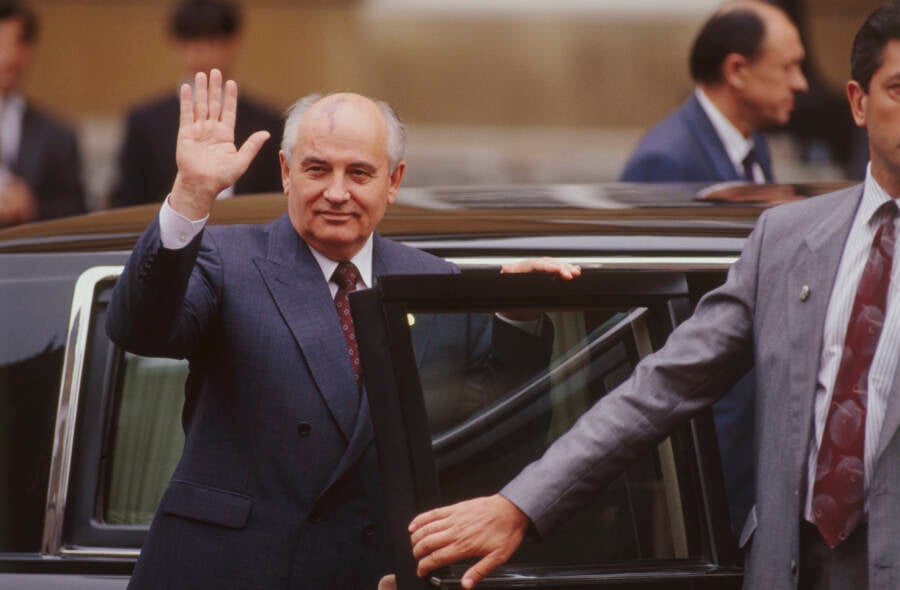
Pascal Le Segretain/Sygma/Sygma via Getty ImagesMikhail Gorbachev in July 1991, shortly before an attempted coup that would lead to the collapse of the Soviet Union.
Gorbachev also ended the Soviet Union's seemingly endless war in Afghanistan, reduced Soviet military presence in Eastern Europe, and resolved not to use force when the Berlin Wall, which separated East and West Germany, fell in 1989.
But for some, the changes that occurred under Gorbachev seemed to be too much. Many criticized his reformist policies, blaming them for cratering the economy, and watched uneasily as Soviet republics like Estonia, Lithuania, and Latvia declared their independence.
The collapse of the Soviet Union was already underway, but an attempted coup in August 1991 would hasten the U.S.S.R.'s final fall.
The Collapse Of The Soviet Union
On August 18, 1991, Mikhail Gorbachev was confronted by five men at his vacation home in Foros, Crimea. Valery Boldin, his chief of staff; Oleg Baklanov, first deputy chairman of the U.S.S.R. defense council; Oleg Shenin, secretary of the Central Committee of the Communist Party of the Soviet Union; General Valentin Varennikov, chief of the Soviet Army's ground forces; and KGB General Yury Plekhanov demanded that Gorbachev give up power.
According to Encylopedia Britannica, the Communist leaders wanted Gorbachev to transfer power to his vice president. But Gorbachev refused. Though the would-be usurpers cut his phone line and placed Gorbachev under house arrest, the Soviet leader was able to get a message out.
Thus, when the coup leaders announced that Gorbachev was being imprisoned because of his ill health, many knew that it was a ruse. And when tanks rolled into Moscow, they were met by protestors.
Over the next three days, the world's eye fell upon Moscow. Protestors marched through the streets, the coup leaders attempted to solidify power, and Boris Yeltsin, the president of Russia, made a dramatic speech atop a tank condemning the coup leaders as traitors and criminals.
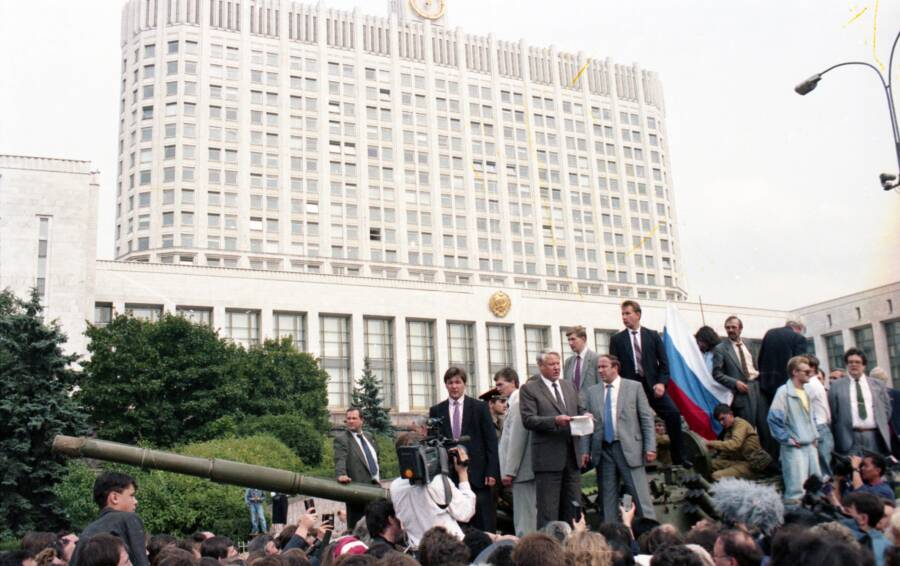
Wojtek Laski/Getty ImagesBoris Yeltsin addressing the crowd on August 19, 1991, during a failed coup by Communist hardliners.
On August 21, the coup collapsed. Its leaders had not counted on Gorbachev's resistance, Yeltsin's commanding presence, or the determination of protestors in Moscow. But it left powerful aftershocks in its wake. As the U.S. State Department notes, the coup diminished Gorbachev, elevated Yeltsin, and emboldened countries within the U.S.S.R. to break away. Belarus and Ukraine declared their independence, and the Baltic States demanded international recognition.
About three months later, on Dec. 8, Yeltsin signed an agreement with Belarus and Ukraine agreeing to let them leave the U.S.S.R. Their agreement read in part: "The Soviet Union as a subject of international and geopolitical reality no longer exists."
Then, on Christmas Day, Mikhail Gorbachev officially gave up power — and the collapse of the Soviet Union was complete. With Yeltsin in charge, the hammer and sickle flag of the U.S.S.R. was lowered at the Kremlin, and the Russian tricolor flag was raised instead.
"I am leaving my post with apprehension, but also with hope, with faith in you, your wisdom and force of spirit," Gorbachev told the nation in his resignation speech. "We are the heirs of a great civilization and its rebirth into a new, modern and dignified life now depends on one and all."
After 74 years, the Soviet Union had fallen. The communist bloc instead separated into 15 countries: Armenia, Azerbaijan, Belarus, Estonia, Georgia, Kazakhstan, Kyrgyzstan, Latvia, Lithuania, Moldova, Russia, Tajikistan, Turkmenistan, Ukraine, and Uzbekistan.
So what happened to Russia after the collapse of the U.S.S.R.?
Russia Since The Fall Of The U.S.S.R.
In the immediate aftermath of the fall of the U.S.S.R., Russia struggled. The economy faltered as the country tried to move from a command economy to a market economy, according to Encylopedia Britannica, and Russians were frustrated at their inability to find necessary items at grocery stores.
The struggling economy, the rise of crime, and the loss of Russia's "superpower" status dampened the popularity of its new leader, Boris Yeltsin, who nevertheless remained in power until 1999. But his successor, Vladimir Putin, came to the presidency determined to restore Russia's former glory.
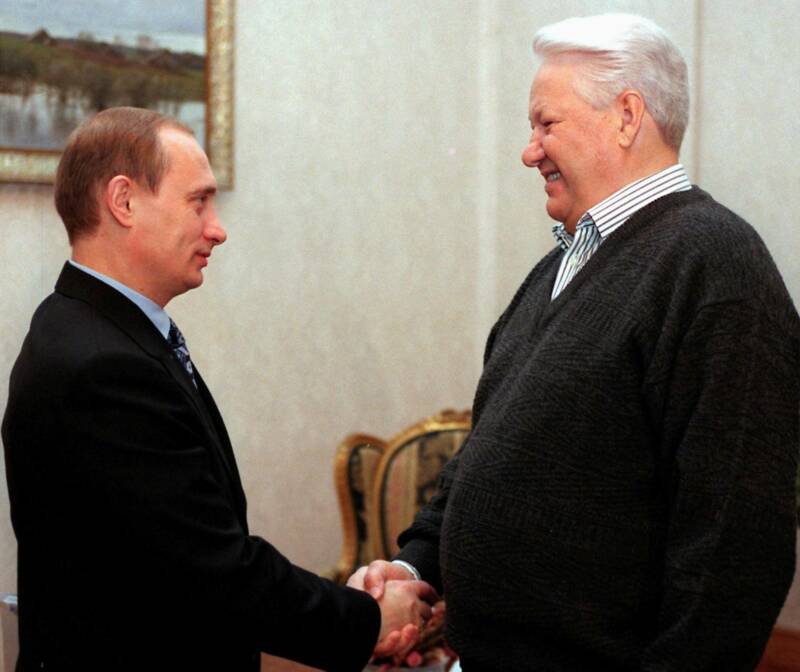
STR/AFP via Getty ImagesVladimir Putin and Boris Yeltsin shaking hands in November 1999, eight years after the collapse of the Soviet Union and shortly before Putin ascended to the Russian presidency.
"For the first time in the past 200 to 300 years, Russia faces the real danger that it could be relegated to the second, or even the third tier of global powers," Putin, a former KGB officer, warned shortly before taking power in early 2000. As president, he emphasized Russia's glorious past and discouraged discussion of its mistakes.
Even Stalin — whom other Soviet leaders had criticized — was praised under Putin. One teaching manual that emerged during Putin's presidency described Stalin as "the most successful leader of the U.S.S.R.," despite his legacy elsewhere as a dictator responsible for famines, imprisonments, and purges that led to millions of deaths.
Putin also came to see the collapse of the Soviet Union as the "greatest geopolitical catastrophe of the 20th century."
"It was a disintegration of historical Russia under the name of the Soviet Union," he said, according to Reuters. "We turned into a completely different country. And what had been built up over 1,000 years was largely lost."
Putin also lamented how 25 million Russians within the U.S.S.R. were suddenly cut off from their motherland. As such, it's easy to draw a line between the collapse of the Soviet Union and Russian aggression in Europe today. The fall of the Soviet Union may have taken place decades ago, but it's clear that the ramifications of its dissolution continue to have an impact.
Above, look through 55 photos that depict the collapse of the Soviet Union. They show the end of the U.S.S.R., but also the beginning of a new Russia — one that has an eye on both its past and its future.
After reading about the collapse of the Soviet Union, look through these disturbing photos from Soviet gulags. Or, peruse these colorful Soviet propaganda posters.
